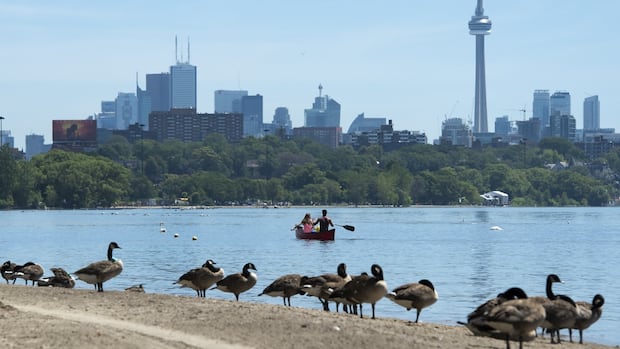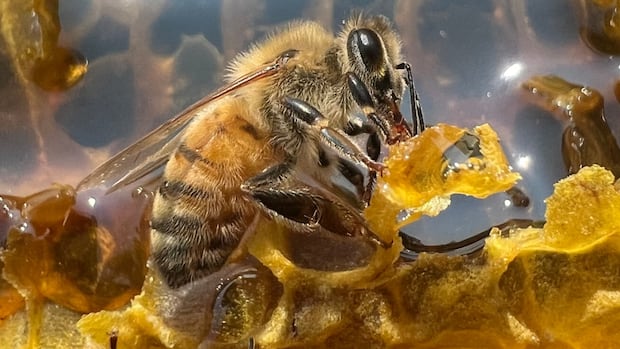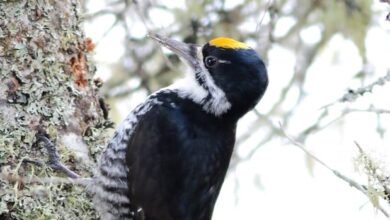City data suggest ‘grim decline’ of water birds on the beaches of Toronto in the summer, expert says

This story is a collaboration between CBC Toronto and the Investigative Journalism Foundation (IJF).
A new analysis of city data has suggested a dramatic decrease in birds on Toronto beaches over the past two decades.
The audience dataset Show 73 percent fewer water birds calculated on the beaches of Toronto from 2008 to 2024, indicating that the waterfront has become less hospitable for the animals, according to experts, but also that the efforts of the city to keep birds away from the beaches.
The 11,488 counts were performed by lifeguards, instead of scientists, and do not form scientific research, but form one of the most common reports of conditions for water birds in Toronto in the summer months, according to an expert who has assessed the data.
The counts were completed on 10 Toronto beaches during the summer months during the 17-year-old spanning width. According to the data, lifeguards counted an average of 51 water birds per count over all beaches in 2008, compared to 14 in 2024. The most affected beaches include Sunnyside Beach, which went from an average of 100 water birds counted in 2008 to 17 in 2024, and Center Island Beach, which went from 92 to 15 in 2024.
A spokesperson for the public health of Toronto said that the reduction of birds was expected because the city tried to discourage their presence when the beaches are open to swim, to minimize droppings. This includes corraling and moving birds, carrying out statutes against the conduct of water birds and the use of dogs to drive them away.
Fewer birds mean fewer droppings and less chance of E. coli in beach waters. But one expert says that the data raises important questions about the habitat of animals in the wild and whether the reduced presence of birds on beaches means that they make houses elsewhere or that their population could decrease as a result of human activity.
Questions about long -term impact
According to Marc Cadotte, a biology professor at the University of Toronto Scarborough who has assessed the data independently, the counts show a “grim decline” in the number of birds on the somewhat course.
If the scaling agents of the city are successful, Cadotte wonders if they are resulting in a loss of habitat for the birds.
“They move to other places in the city, or have these deterrents influence the long -term populations? Wild animals lose the habitat consistently with urbanization, and if we expel them from usable habitat, we increase our effects,” he said.
“This is more of a case of classical conflict in the field of human game, and the usual result is that wildlife loses.”
When asked about the possibility of population decrease, said Mahsh Patel, Health Protection Manager at the Public Health of Toronto, that measuring the number of birds in an area can be a challenge in view of their constant movement and that the data should be conceived as a snapshot on time.
The city did not respond to questions about the possible environmental impact of its measure on bird populations in general.
The population of the Greater Toronto area rose from 5,530,588 in 2008 to 7,106,379 in 2024, according to Statistics Canada.
“Cities are where we get several stressors together with people, and so we get a kind of photo of what will happen elsewhere in the future,” said Cadotte.
Toronto Public Health says that the data should not be used to estimate the presence of water birds in Toronto in general.
“Although the daily counts in the beach observation data are a rough estimate, the collected data is useful to have, because we know that a higher number of water birds can negatively influence the water quality due to a potentially higher number of droppings,” TPH said in an e -mail.
Better data needed, says one expert
Spokesperson for Toronto and Region Conservation Authority Afiya Jilani said that part of the water bird population is hit by TRCA and city staff that deliberately moves geese from people and that it is difficult to draw conclusions about the circumstances for water birds in general.
“Although fewer water birds may be observed on Toronto beaches, this can be a reflection of improved habitat conditions elsewhere in the region,” she wrote.
Mark Peck, manager of the Schad Gallery of Biodiversity in the Royal Ontario Museum, said that he is “strongly worried” about trusting this specific data set to understand bird population as a result of strangers in methodology, such as lifeguards with varying levels of suitability or motivation to perform the counts.
He said that other research points that Toronto is still a good place for water birds to migrate in the winter and that counting them on beaches in the summer is not a good indicator of how they are doing.
“The areas where lifeguards will come are probably not the best areas for water birds in Toronto,” said Peck.
‘A sad side effect’
For Haroop Sandhu, a student who lives in Toronto and more frequently of Woodbine and Center Island beaches, looking at ducks is an important reason why she goes to the beaches.
“I love animals in the wild, it’s one of the most important parts of the beach,” she said. “I feel like [human activity] Is the main reason that we can’t really do nothing about it, because people go to the beach, so it’s a side effect, but it’s a sad side effect. “
Bird Watcher Vivian Li, who is in favor of Sunnyside Beach, shared the same sentiment. “It is also their home, and we have to share the space with them instead of chasing them,” she said.
Cadotte says that despite limitations to the data, it is still useful for describing conditions on beaches.
“I would say that this type of data exceeds more than the dubious limits for the minimum amount of data. So I think it is actually quite robust in terms of the number of observations,” he said.
Whether it shows that birds only spend time in other places or wider population issues, Cadotte said: “There is no scenario in which this would be a good thing.”




